Good Morning Exercise Video
Introduction
The good morning exercise is a solid choice for booty building, but tends to be a little riskier than other glute and hamstring training options. Selecting appropriate weights and staying focused throughout the set are super important.
In this article, I give you my thoughts on the good morning exercise, how to do it correctly, and all of the common mistakes people make.
My Thoughts on the Good Morning Exercise
Good mornings are a wonderful booty builder
The posterior half of your body has a chain of muscles that work well together, but tend to be undertrained.
Most notably, the glutes and hamstrings are perhaps the most underutilized muscles in the entire body… though I might include the serratus anterior on that list as well.
There are many ways to get a bigger, stronger backside, but the good morning exercise is one of them.
The good morning is kind of a risky exercise
All training is a risk/reward decision. Lifting heavy things exposes the body to risk of injury. Good mornings place the bar so far away from the body’s center of mass that even light weights can generate tremendous torque through the hips and, more concerningly, the low back.
So first, be sure to use appropriate weights when doing the good morning exercise.
But on top of that, the lifter must remain focused. A brief lapse in attention can place some wear and tear on the back, maybe even setting back training for a few weeks.
Good mornings work, but might not be worth the risk. If the lifter frequently has back issues, I would recommend finding another exercise, such as the Romanian Deadlift.
And let us remember that NOT lifting and working on fitness is also risky.
The good morning exercise is tough to perform for people with long, flexible hamstrings
The best way to know if the lifter is in a good position for a lower body exercise is by finding and feeling the hamstrings.
But when the hamstrings are hyperflexible, they aren’t very good at sending signals of sensation to the brain. It’s difficult to stretch them, much less get to actually turn on and do some work.
Even those with tight hamstrings often have trouble with good mornings since their hamstrings are tight because of persistent, low grade activity rather than actually being short.
For flexible lifters, make sure to use appropriate weights. Moving slowly can also help as it allows time to sense muscle activity, helping ensure the hamstrings are doing the work.
When in doubt, make the legs burn.
How to Perform the Good Morning Exercise
- Stand tall with a bar on the back, feet hip width apart, and toes pointed forward
- Keeping a neutral spine, push the butt backward until the hamstrings are stretched
- Stand up by reversing the motion, pushing the hips forward
- Maintain pressure in the heels throughout the movement
Correct Good Morning Technique
Side view
- Rounding the back
- Arching the back
- Losing heel pressure
- Toe rise
- Lack of hip drive
- Too much or too little knee bend
Front view
Pain
Rounding the back
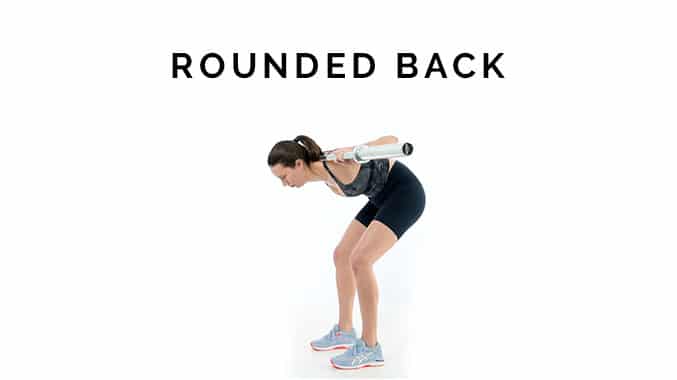
Rounding the back over can place undesired stress on the spine, especially when done with heavy loads.
To fix it:
- Stay tall from the trailing knee to the top of the head throughout the lift
This fix is easier to conceptualize than it is to perform. Aim to “feel it” in the legs; more burning sensation is better.
This cue can cause problems when taken to the extreme. Avoid arching the back.
Arching the back
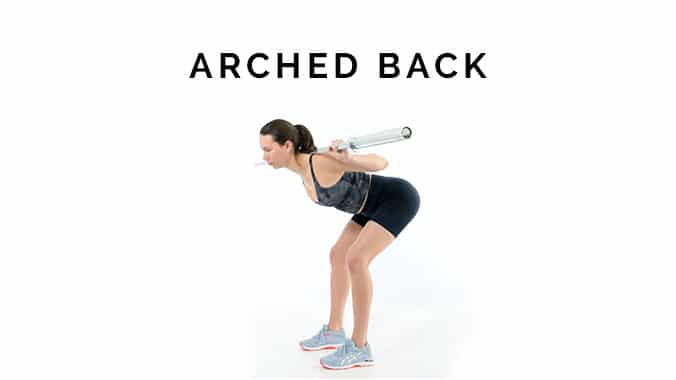
An arched back or bilateral rib flare inhibits the leg muscles and shifts the load onto the back. An excessive arch can also lead to butt wink in the good morning, which is hot garbage for the back.
To fix it:
- Take a breath in and sigh out all of the air, letting the shoulders slouch slightly
- Pause for 5 seconds at the end of the exhale
- Continue breathing as normal while maintaining this position
If this isn’t fixed during the set up, the arch will persist and likely worsen throughout the rest of the movement.
Beware that lifters who are used to arching their back, the neutral position will feel very rounded.
Losing heel pressure
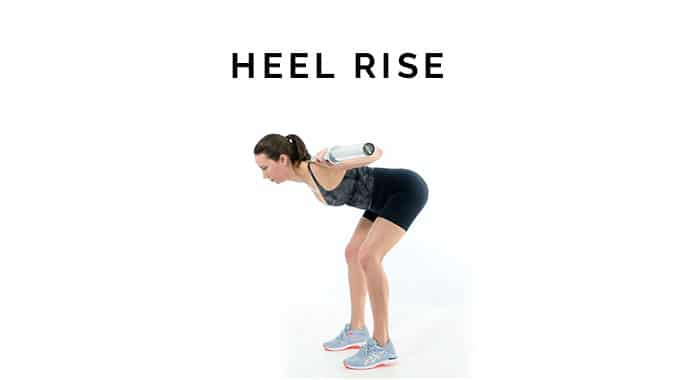
Heel rise, or more subtly, a decrease in pressure through the heel, is a sign of calf, hip flexor, and low back muscle overactivity.
To fix it:
- Actively push long through the heels on the way down AND on the way up
The trick here is to maintain heel pressure without simply shifting the weight so far back that the toes rise up. Rising toes are another sign that the low back is kicking on.
Toe rise

Toe rise is a sign of hip flexor activity and a lack of balance.
To fix it:
- Shift the weight forward very slightly in the bottom of the good morning
- Keep the toes relaxed and gently pressed into the ground throughout the lift
Lack of hip drive
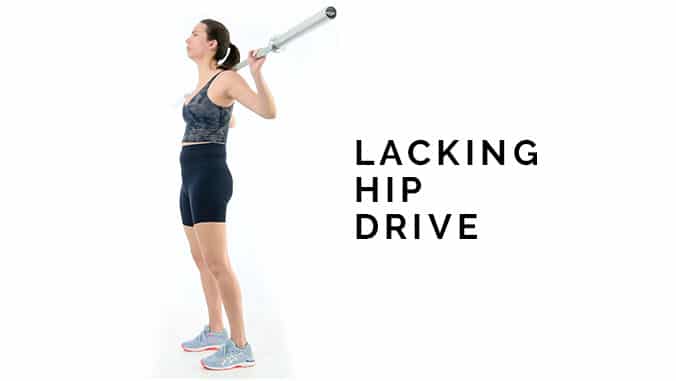
Cuing hip drive is the most useful cue in fixing the good morning.
A lack of hip drive is most obvious by asking the lifter, “Do you feel this in your glutes and hamstrings?” If the answer is no, we need to fix that.
To fix it:
- Imagine bringing the hips forward out of the bottom of the good morning
- Make sure the feet stay flat
- Aim to make the glutes and hamstrings burn
If the glutes and hamstrings are doing the work, the low back doesn’t have to take over.
Too much or too little knee bend
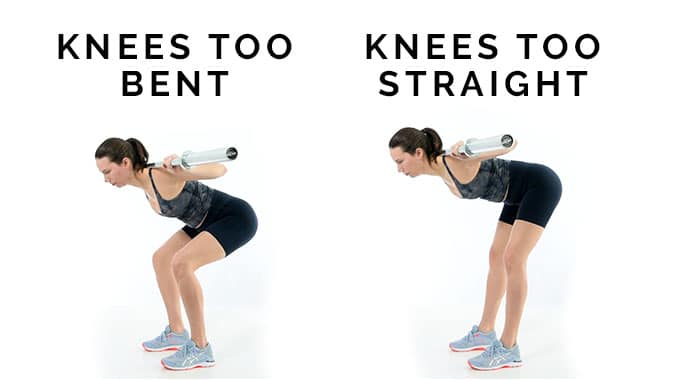
Knee bend is a way to turn the good morning into a squat. It removes load from the hamstrings. Since the whole point of the good morning is to train the hamstrings, knee bend is undesirable.
Locked out knees are an okay way to do good mornings, but the hamstrings get so long that they lose some of their ability to generate tension. Lifters are much strong with even just a slight knee bend.
To fix knee bend in the good morning:
- Practicing without any weight, hold the bottom position of a good morning
- Attempt to make the shin vertical; the knees should be soft, not locked out
- Once fixed, cue the feet flat with pressure through the heels
Hip shift

A hip shift indicates an imbalance in the hip muscles. If the hips shift right or turn right, then the right glute is long. This is the most common type of hip shift.
To visually identify a hip shift:
- Watch the centerline of the hips at the bottom of the good morning
- If the centerline is not over the midline, then the hips are shifted
- If one glute is more visible than the other, then the hips are twisting
This is subtle and can be difficult to visualize even for experienced coaches. A better way is for the lifter to feel if the hips are shifting during the movement:
- Perform a good morning rep and briefly pause at the bottom
- Check if one foot has more weight on it than the other
- If there’s more pressure through one foot, then that is the direction the hips are shifting
- If it’s difficult to tell, then there probably isn’t an appreciable hip shift
To fix a hip shift:
- Attempt to keep even pressure on the feet when pushing the butt backward
If the lifter has trouble with this cue, they may benefit from additional posterior hip capsule inhibition.
Bad hip alignment often coincides with an asymmetrical rib flare.
Asymmetrical rib flare
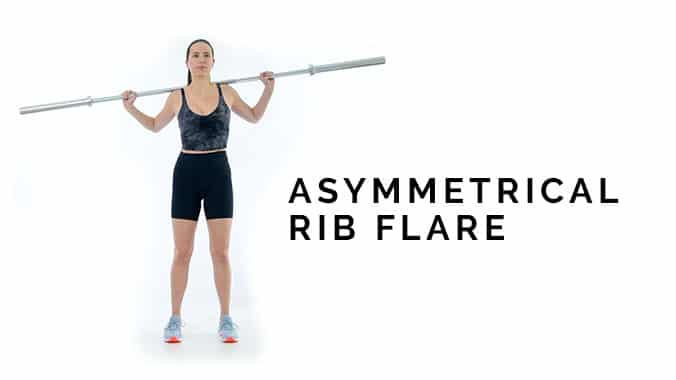
An asymmetrical rib flare suggests the spine is twisted.
To identify a twist in the torso:
- Start standing with a bar on the back
- Look for protrusion of the lower rib cage
- If either of the ribs are not flush with the abdomen, those ribs are flared
- If one side is more flared than the other, then there’s a twist in the torso
To fix a rib flare:
- Start at the top of the good morning, take a big exhale, tuck the hips into a posterior pelvic tilt, and tuck the ribs down toward the hips
- Rotate the lower ribs toward the rib flare until it disappears
- Maintain this position throughout the lift
When a lifter first fixes a shift or twist, they often feel very wrong. This is normal. If the lift felt like it always feels then it would look like it always looks.
It can be difficult to breathe normally while maintaining this position, but lowering the weight and moving slowly can help.
Knee alignment
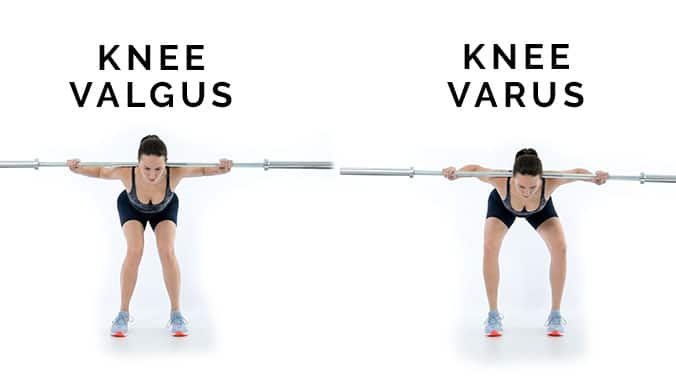
Knee valgus and knee varus are bad for knee health.
Knee valgus is when both knees come closer together. Knee varus is when the knees splay apart.
To fix it:
- Aim to place the knees in line with the hip and ankle
- If the knees tend outward, put pressure through the inside of the feet
- If the knees tend inward, maintain pressure through the heels and glutes throughout the lift
Back pain during the good morning exercise
Medical Disclaimer
Exercise is not without risk, even for healthy individuals. Same goes for diet. Make sure your doctor is okay with your self-experimentation. By visiting and remaining on this website, you acknowledge and agree that you have been assessed by a qualified medical professional who has given you consent to take part in physical activity.
Back pain and tightness can easily occur during the good morning exercise.
Glute and hamstring activity stave off back pain. Attempt to make them as tired as possible during each and every set.
But honestly, if you’re feeling back pain during good mornings, you should stop them (or at least lighten the load drastically). If the pain happens every time you do the exercise, you should talk to your doctor or at least a physical therapist.
Summary
The good morning exercise is a risky exercise, but good for developing the glutes and hamstrings when performed correctly.
Give them a shot if you’re looking for a new posterior chain accessory exercise. Just be careful to keep tension on the legs and not the low back!
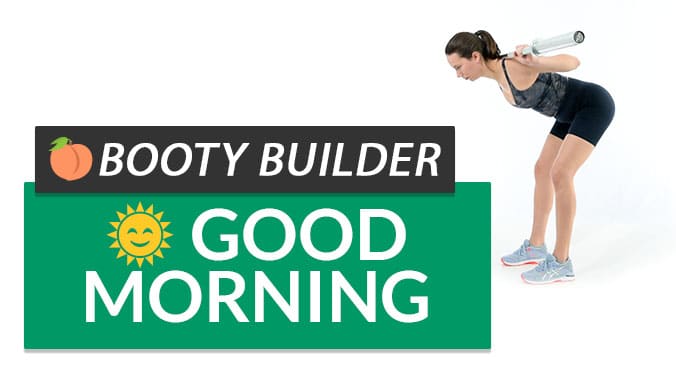
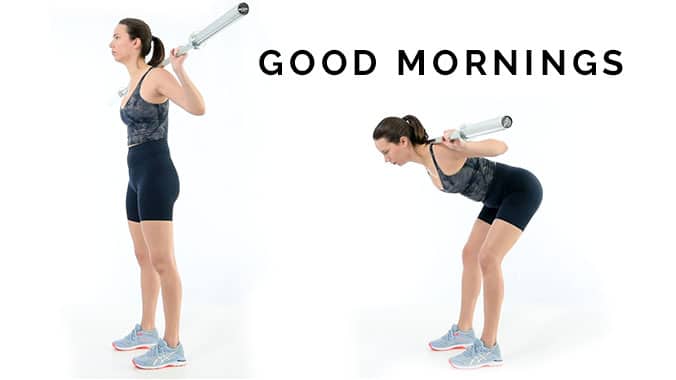
Add some color to this commentary.